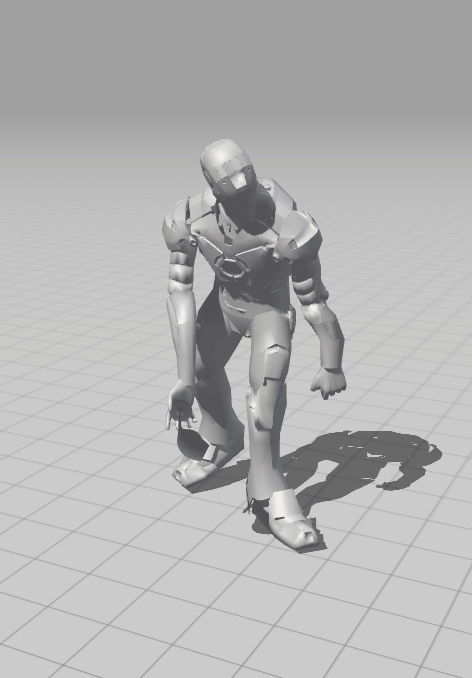Drunkard (Alt-controller game)
A gamer playtesting our game!
Project Vision & Core Concept:
"Drunkard" emerged as an experimental integration between physical wearable technology and digital interactive gameplay. The core idea was playful and straightforward: let players physically embody a drunken Iron Man, using their own body movements to stay balanced amid random disturbances. By creatively combining physical interaction and digital immersion, we aimed to push traditional game boundaries and explore unique interactive experiences.
Gameplay Experience:
Players equipped a customized wearable controller—featuring a chest piece, shoulder elements with LED indicators, and a handheld camera controller. The gameplay tasked them with physically balancing themselves to counteract random rotational forces, simulating dizziness or intoxication. Obstacles like cars appeared throughout gameplay, challenging players to react in real-time. The handheld controller added complexity, as players had to manage camera perspectives simultaneously, enhancing both challenge and fun.
Detailed Hardware Development:
As the hardware engineer and 3D artist, my role was deeply intertwined with the physical experience. Here’s a detailed breakdown of this process:
Initial Wearable Prototyping: The first iteration was simplistic—a basic wearable chest piece housing a Microbit microcontroller for motion sensing. This initial version revealed ergonomic limitations during early playtests.
Iterative Design and 3D Printing: Responding to player feedback, I redesigned the wearable setup to enhance comfort, aesthetic appeal, and durability. All wearable components—chest pieces, shoulder modules, and handheld controllers—were carefully modeled by me in 3D software, optimized for functionality, and then precisely 3D printed to accommodate electronic parts securely and comfortably.
LED Integration: An LED strip was incorporated into shoulder pieces to visually represent the player's in-game success. However, user tests showed visibility issues, leading to a later redesign that repositioned these indicators for better player and audience visibility.
Microcontroller & Software Engineering:
Handling the technical side, I wrote all Microbit scripts and managed the serial communication bridge between these microcontrollers and Unity. This allowed precise and responsive translation from real-world player movement into the game. For example:
Real-Time Motion Detection: Used accelerometer data from Microbits to accurately capture and respond to player's tilt angles in real-time, creating believable and immersive gameplay.
Handheld Camera Controller: An additional handheld piece was programmed to control camera angles independently, introducing complexity and depth to the player’s physical interaction with the game environment.
Checkout the source code for microcontroller here! Code
3D Character Art & Animation:
I also contributed significantly to the artistic representation of the Iron Man avatar:
Model Optimization and Rigging: Remeshed and rigged the Iron Man character, ensuring smooth and believable animations corresponding to player movement, significantly enhancing visual feedback and immersion.
Animation Integration: Synchronized these animations within Unity to respond seamlessly to player input via microcontrollers.
User Testing & Feedback Implementation:
Our playtesting session, involving classmates and instructors, provided crucial insights:
Positive responses:
Immersive Experience: 90% of testers expressed enjoyment and felt genuinely like Iron Man, highlighting the project's immersive appeal.
Comfort and Usability: 80% appreciated the wearable’s comfort and ease of use.
Constructive feedback:
Game Difficulty & Dizziness: A significant percentage found the game overly challenging and disorienting.
Action: Adjusted random rotational force values, decreased player tilt sensitivity, and increased obstacle appearance intervals.Visibility of LEDs: Only 20% noticed LED strips, indicating poor positioning.
Action: Redesigned LED positioning onto more visible parts like backpack-style straps.Handheld Controller Bulkiness: Internal feedback indicated the handheld camera controller felt slightly bulky.
Action: Redesigned and reprinted a smaller, lighter, ergonomically-friendly handheld device.
Technical Challenges & Solutions:
Several technical challenges arose and were addressed:
Power Efficiency:
Initially, LED features consumed considerable power, draining batteries rapidly. We reduced unnecessary lighting features and optimized power consumption.Physical Durability and Aesthetics:
Early prototypes relied heavily on adhesives. Later iterations involved creating sturdier, more aesthetically pleasing designs through precise 3D-printed casings, significantly improving overall product quality.
Collaborative Effort:
I closely collaborated with teammates, integrating their contributions seamlessly into the project:
Sihao Chen (Paul): Developed Unity’s core gameplay systems.
Sanaz Khanali: Contributed ergonomic design insights, created initial Iron Man models, and produced early camera controller parts (Paper prototype).
Dazheng Zhu (Davide): Managed sound design, researched Microbit libraries
Final Thoughts:
The development journey of "Drunkard" was challenging but highly rewarding. It provided a significant opportunity to deepen my skills in physical computing, interactive design, 3D modeling, and user experience. The positive feedback and enthusiastic user engagement confirmed the effectiveness of our integrated design approach. Moving forward, I'm excited to apply these insights to future interactive projects, particularly those involving innovative hardware and gameplay integration.







